
Moon, Perseids Again
Forecast was for generally clear skies Thursday night, 12 August, for round #2 of my Perseid Meteor Shower watching. I opened the observatory at 1814 MST, 109°F. There were some clouds in the south and west. I first set up for this night’s meteor watching and sky photography. The D70 DSLR was again mounted piggyback on the ETX-90RA. After I finished setting up, I checked out the “light shield” to the west. It has been damaged by strong winds this past spring and summer:
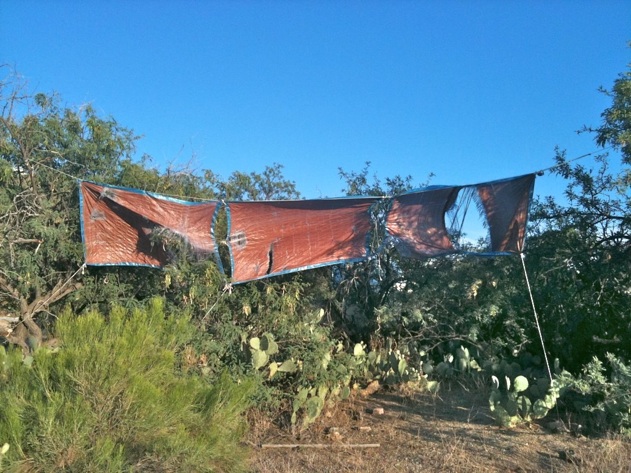
Each of the three tarps has holes. Fortunately, the extensive foliage is helping blocking light pollution from the west. But I’ll have to replace the tarps come winter.
At 1834 MST, viewed Venus, the Moon, and Mercury in the 26mm eyepiece. Then viewed Mercury in the 9.7mm; nice view tonight.
Had another visitor to the observatory:
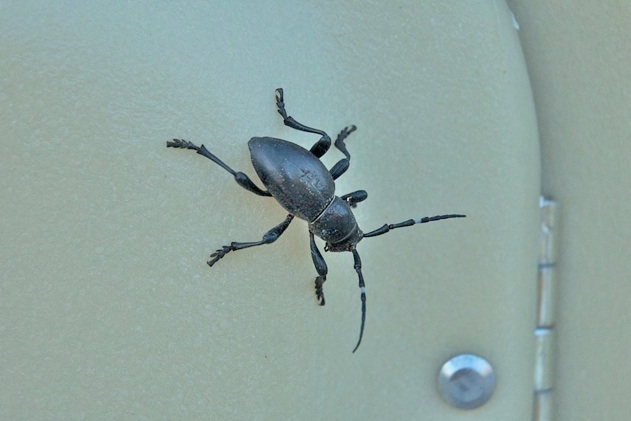
This beetle was on the POD door. His body was over 1” long. A few minutes later a second one appeared near the POD. Both eventually decided to move on.
I captured the crescent moon at prime focus of the 8” telescope using the D70 DSLR. This is a 1/160th second, ISO 1250 exposure taken at 1930 MST:
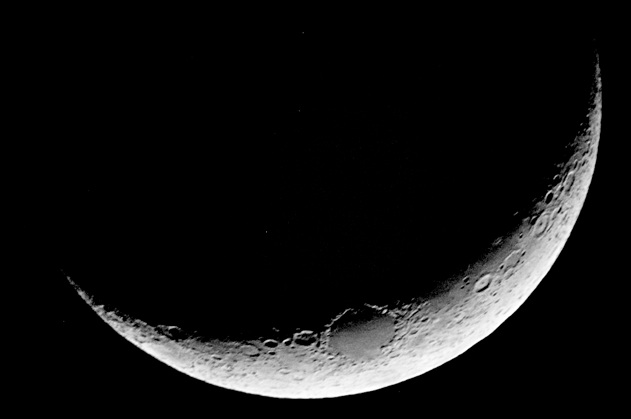
Here is Earthshine, “Hat Trick”, ISO 1250, at 2000 MST:
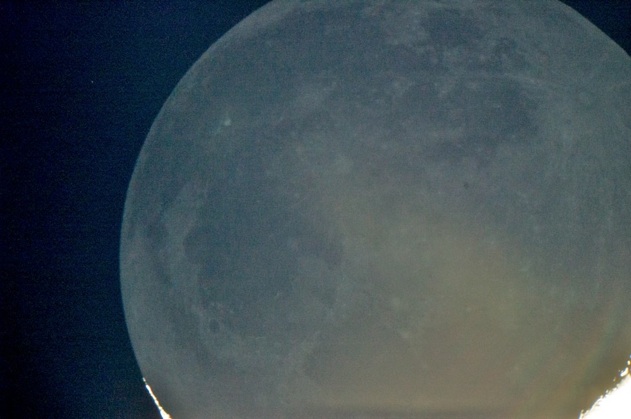
(The brown area is from glare from the illuminated portion just outside the camera FOV.)
The planets Mars, Venus, and Saturn were visible just above the crescent moon in the western sky after sunset:
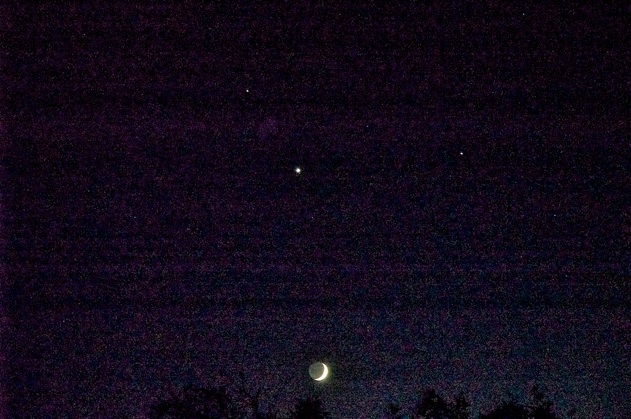
The above image was taken at 1/4sec, ISO 1250, handheld (but braced).
At 2017 MST, I did some brief lunar observing with the 26mm eyepiece. The moon was very low in the sky now.
I decided to take advantage of being set up for meteor watching and spend some time observing the night sky with my 7x50 binoculars while waiting for the meteor shower to start. I set the telescope to sleep. At 2030 MST, the Milky Way was glowing nicely overhead so I started by scanning along its length. Lovely views.
At 2109 MST, I saw the first Perseid meteor of the night. It was a bright one with a long trail. I wondered if the meteor shower was starting. I put the binoculars down and watched the sky. Over the next hour I saw 9 more Perseids and one non-Perseid meteor. Yep, the shower had started! Over the next several hours, I saw many Perseids and several non-Perseid meteors. A couple of neighbors came over to watch and they stayed until 0130 MST. Just after they left, there was a brief power outage. It caused the AutoStar to lose its star alignment. But since I wasn’t using the telescope anyway, that wasn’t a problem.
I watched the shower until 0400 MST. I started sky astrophotography at 0206 MST; took 21 images, averaging about 5 minutes, ISO 640, until 0356 MST, when the camera battery died. Clouds began appearing low in the east and south around 0230 MST. And starting about 0300 MST, there were frequent lightning flashes in the distance.
Only one of the 21 sky images had a meteor. (Got to get a wide angle camera lens some day.) This cropped image shows the constellation of Perseus at the upper left, the meteor, and the Pleiades at the lower right:
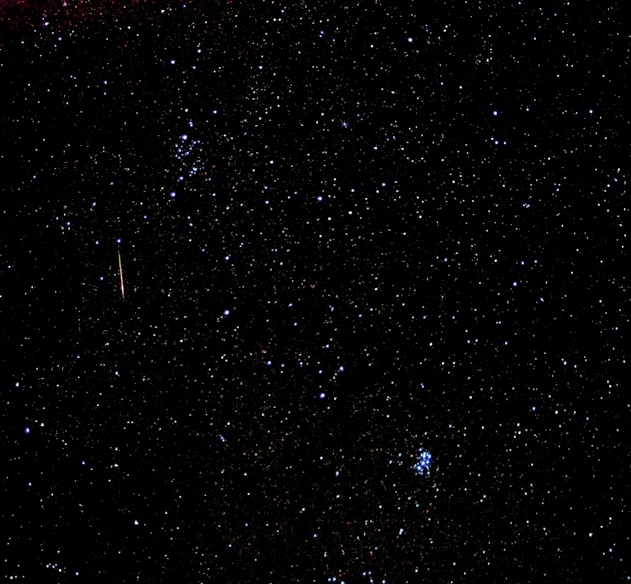
Most of the Perseid meteors I saw were much longer and brighter, and many had nice trails.
So, how many meteors did I see during the 7 hours I was watching?
Perseids = 139, others = 23. The highest hourly count was 0200-0300 MST.
For the two nights, I saw 216 Perseid meteors and 43 other meteors. A very enjoyable experience.
At 0413 MST, I re-did the AutoStar One Star alignment and then parked the telescope. I closed the observatory at 0420 MST, temp=76°F.
Friday, August 13, 2010

